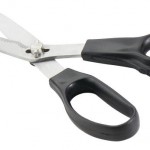Do you use coupons to promote your business?
In the first half of 2011, coupon redemption volume reached $1.75 billion despite a decline in coupon distribution, according to NCH Marketing Services, Inc. Today’s consumers, whether businesses or individuals, are value-oriented and looking for deals.
There are pros and cons to coupon marketing, but if you want to try it, or if you know coupons work for you, these tips will help maximize your coupon campaign:
1. Make a clear, attractive offer. Discounts (either a specific dollar amount or a percentage) are the most popular coupon offer, but you could also offer bonuses (“buy this, get that”) or even something for free (information or an inexpensive item for coming into your store or visiting your website).
2. Use brief, bold headlines. Readers should be able to know at a glance what you’re offering, or at least be teased enough that they want to read more.
3. Include complete details. At best, an incomplete coupon won’t be effective; at worst, it will generate more headaches than new business. Keep in mind that not everyone will agree with what you think should be understood or assumed, so tell them everything they need to know. If applicable, be sure to include:
• Expiration date. Make it reasonable for both you and your customer. Give your customers sufficient time to take advantage of the offer within a timeframe that works for you. Expiration dates create a sense of urgency and also prevent someone from taking advantage of an old coupon that would be difficult or costly for you to honor.
• Quantity limits. Your customers should be able to buy enough to realize value, but not so much that you are cleaned out of the item or are forced to take an unacceptable loss.
• Availability restrictions. If the offer includes a special purchase and you don’t intend to restock, add language such as “while supplies last.”
• Location and contact information. Let people know where you are and how to reach you if they have questions.
• Other restrictions. Be clear on any other restrictions you wish to apply, such as “one to a customer” or, in the case of restaurants, “one coupon per table.” If the offer is a “buy one, get one at a discount” deal, be clear about which item will be discounted (generally, it’s a second item of equal or lesser value).
• Redemption instructions. Tell customers what they have to do to redeem the coupon. For example, restaurants may ask that coupons be presented at the time of order so the final check can be calculated correctly the first time. If customers will redeem the coupon on your website, tell them when and how to enter the coupon code.
4. Use good design elements. Your coupon is as important as any other graphic element in your marketing package. Be sure it includes your logo, appropriate images (such as a photo of the product), and presents the benefits of your offer clearly. Remember to use white space effectively; a cluttered coupon is hard to read and less likely to be used.
5. Capture customer information. Consider asking customers to provide their name, phone number, address, and/or email address on the coupon, then use that information for your ongoing marketing efforts.
Bonus tip: Before you send your coupon to the printer, proofread, proofread, proofread! If you change anything at all, check the entire coupon to make sure other copy wasn’t affected by the change. Don’t risk potential damage to your image, customer relations, or profits by distributing a coupon with mistakes.
- Discovering the Counter-Cultural Jesus - April 12, 2024
- Google Chrome Tip: Navigating Your Tabs - March 15, 2024
- Start a Workplace Book Club - February 14, 2024







Jackie ~ I LOVE the material you choose to post on your blog and in your newsletters! Very useful, often entertaining, and ALWAYS well written.
Your post is really very usefull and well written.If we know coupons work for us, these tips will definately help maximize our coupon campaign.
You also want to be sure that your coupon details are appropriate for your audience.
On a recent Tonight Show Headlines segment, Jay Leno had a coupon for a place calling itself “the ultimate in adult entertainment” with the restriction “1 coupon per family.”
Need I say more? 🙂